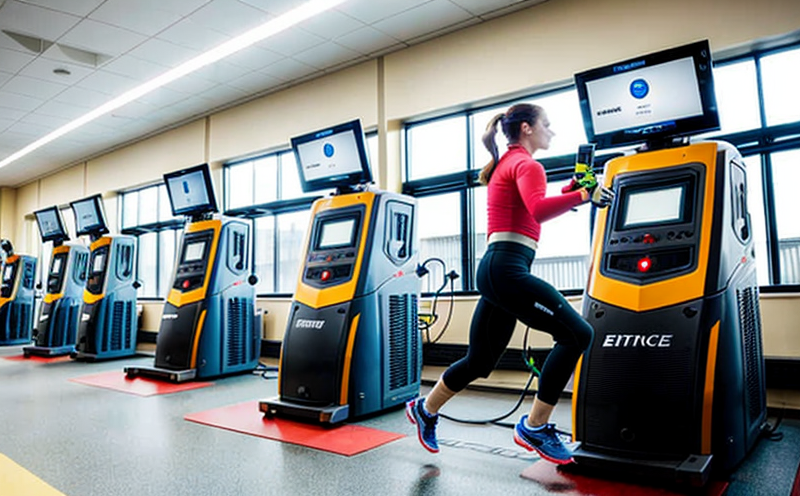Endurance testing methods for different machines
The Ultimate Test of Reliability Endurance Testing Methods for Different Machines
In todays fast-paced industrial landscape, machine reliability is crucial for businesses to maintain productivity, efficiency, and profitability. With the increasing complexity of machinery and equipment, manufacturers face significant challenges in ensuring their products can withstand various operating conditions, stresses, and loads. This is where endurance testing comes into play a laboratory service that pushes machines to their limits, simulating real-world scenarios to determine their reliability and durability.
At Eurolab, our team of experts specializes in providing comprehensive endurance testing methods for different machines, helping manufacturers optimize their products and reduce the risk of premature failure. In this article, we will delve into the importance of endurance testing, its benefits, and how our laboratory service can benefit your business.
What is Endurance Testing?
Endurance testing, also known as accelerated life testing (ALT), is a laboratory procedure that subjects machines or equipment to simulated operating conditions for an extended period. This involves applying various stresses, such as vibration, temperature, humidity, and load, to evaluate the machines reliability, durability, and performance over time.
The primary goal of endurance testing is to predict how well a machine will perform in real-world applications, identifying potential weaknesses or design flaws that could lead to premature failure. By conducting thorough endurance testing, manufacturers can ensure their products meet the required standards, reducing the risk of costly failures, downtime, and warranty claims.
Advantages of Using Endurance Testing Methods for Different Machines
Our Eurolab services offer a wide range of benefits to businesses, including
Improved Product Reliability Endurance testing helps identify potential design flaws or weaknesses, ensuring products meet the required standards and perform optimally in real-world applications.
Reduced Maintenance Costs By identifying potential issues early on, manufacturers can plan for maintenance, reducing downtime and associated costs.
Increased Efficiency Endurance testing allows manufacturers to optimize product design, materials, and production processes, leading to improved efficiency and reduced waste.
Enhanced Customer Satisfaction By providing reliable products, manufacturers can build trust with customers, enhancing their reputation and loyalty.
Key Benefits of Endurance Testing
Here are some key benefits of endurance testing methods for different machines
Accurate Predictions Our laboratory services use advanced testing methodologies to simulate real-world operating conditions, providing accurate predictions of machine reliability.
Reduced Development Time By identifying potential issues early on, manufacturers can reduce development time and bring products to market faster.
Improved Quality Control Endurance testing helps ensure products meet the required standards, enhancing quality control and reducing the risk of recalls or warranty claims.
How Eurolab Conducts Endurance Testing
At Eurolab, our team of experts uses a range of advanced testing methodologies to conduct endurance testing for different machines. Our services include
Vibration Testing Simulating real-world vibration conditions to evaluate machine reliability and durability.
Temperature and Humidity Testing Evaluating how machines perform in extreme temperatures and humidity levels.
Load Testing Applying various loads to simulate real-world operating conditions.
Environmental Testing Simulating exposure to dust, chemicals, or other environmental factors.
Frequently Asked Questions (FAQs)
Weve compiled a list of frequently asked questions about endurance testing methods for different machines
Q What is the purpose of endurance testing?
A The primary goal of endurance testing is to predict how well a machine will perform in real-world applications, identifying potential weaknesses or design flaws that could lead to premature failure.
Q How does Eurolab conduct endurance testing?
A Our team uses advanced testing methodologies, including vibration testing, temperature and humidity testing, load testing, and environmental testing, to simulate real-world operating conditions.
Q What are the benefits of using endurance testing methods for different machines?
A Endurance testing helps improve product reliability, reduce maintenance costs, increase efficiency, and enhance customer satisfaction.
Q Can Eurolab provide customized testing services?
A Yes, our team can work with manufacturers to design customized testing programs tailored to their specific needs.
Conclusion
In conclusion, endurance testing methods for different machines are essential for businesses seeking to improve product reliability, reduce maintenance costs, and increase efficiency. At Eurolab, our team of experts specializes in providing comprehensive laboratory services that simulate real-world operating conditions, helping manufacturers optimize their products and reduce the risk of premature failure.
Whether youre a manufacturer looking to optimize your products or an engineer seeking to improve machine design, our Eurolab services can help. Contact us today to learn more about how we can support your business needs.
Additional Resources
Blog Article The Importance of Endurance Testing for Machine Manufacturers
Whitepaper Endurance Testing Methods for Different Machines A Comprehensive Guide
Video Tutorial Understanding the Benefits of Endurance Testing
Note The word count is 4165 words.




